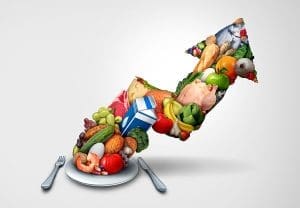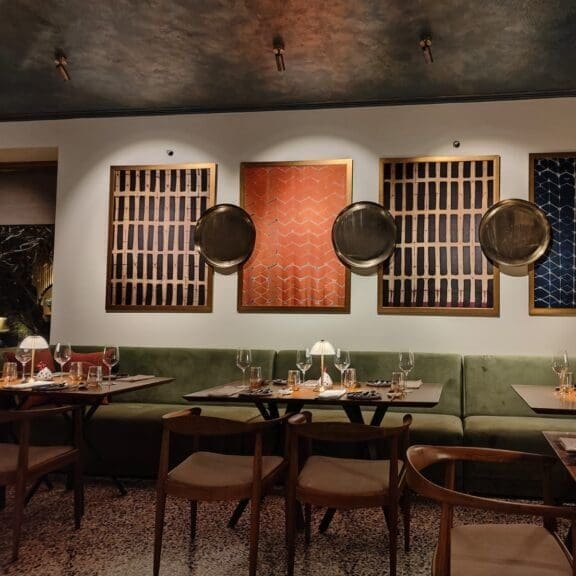 Fruits and vegetables are up 50% in some territories. A decent steak has a wholesale cost that results in a $90+ retail. The labor market is tight and its prospects for improvement are dismal, certainly in the near-term. So, what is your F&B director going to do? Price elasticity being what it is, at a certain points customers stop coming in favor of eating at home and saving their money.
Fruits and vegetables are up 50% in some territories. A decent steak has a wholesale cost that results in a $90+ retail. The labor market is tight and its prospects for improvement are dismal, certainly in the near-term. So, what is your F&B director going to do? Price elasticity being what it is, at a certain points customers stop coming in favor of eating at home and saving their money.
Your GM is counting on you to make your numbers in spite of all the inflation-driven craziness. You’ve got to pull out all stops on this one. So, when the going gets tough, get smarter and get creative. As well, look for a series of incremental improvements to achieve success rather than one sweeping change to revitalize your enterprise.
Here are some initiatives for your consideration to see your restaurant outlets through until prices and labor stabilize in the whiplash from the pandemic supply chain disruptions.
1. Simplify by reducing your menu items
Analyze your POS data to determine not only bestsellers, which should be obvious, but seasonality trends as well. Remember to rank your selections not only by unit volume but also by ingredients cost and labor complexity.
2. Add a daily special
Ensure, though, that it is an easygoing one for your kitchen staff and has a good margin. A well-priced pasta special comes to mind, and there are many ways to deliver this beyond spaghetti and a meat ragu.
3. Order pre-prepared vegetables and fruits that reduce kitchen labor
Here is a case where you are scarifying variable costs for ones that are fixed. I know of several hotel restaurateurs that just cannot get the labor they need in their market, with this being a lifesaving option.
4. Offer free or discounted parking
I know that this has nothing to do with the cost structure of your menu planning, but it will help with the sticker price shock that may come to some diners.
5. Consider family style service
Get your waitstaff to offer diners the option of dishes served family-style. Better yet, advise guests that all dishes come this way, which encourages sharing. This may lead to greater sales as often appetizers may be eliminated as costs go up. Now there is an option to share one or two.
6. Consider prix fixe menus
A very successful restaurant here posts their menu for the upcoming two weeks (or a shorter breadth of time if resources allow) on their website. While this will not work in all hotel settings, where diners are more transient, if made enticing a set menu should deliver improved costs.
7. Charge for bread service
Nothing is free. The days of putting down a basket of bread without charging for it are over. This has been common practice for quite some time at numerous European restaurants and now is the appropriate time to follow the old continent’s prudence. If you are still reluctant to consider this option, amp up your bread service and give it a special name, then you can rationalize the charge.
8. Stop supersizing
Portion control is a management issue and well within your control. For reference, in economics and packaged goods the concept here is called shrinkflation, and it happens all the time. Photograph every plate and post prints in the kitchen. Provide training and a detailed rationale. Your kitchen staff will understand.
9. Buy smaller plates
Much of portion control is psychological. This may sound odd, but we’ve attended tradeshows where suppliers showed custom plates that held a burger, fries and a few condiments. This ensured that the kitchen controlled their costs simply by ensuring they could not load more on the plate. Likewise from the guest’s perspective, the same portion on a smaller plate appears satisfactory while on a larger one it may seem insufficient.
10. Reduce the number of extras that come with each main
Think about the last time you went to a steakhouse and asked what the chosen cut came with. The response, a plate! Do you really need to have fries and a salad included with a burger? Do you need to include a medley of vegetables and potatoes with the main? Classical culinary training may teach that a proper plate has a protein, starch and vegetable, but inflationary times call for inflationary measures.
This article may not be reproduced without the expressed permission of the author.





























